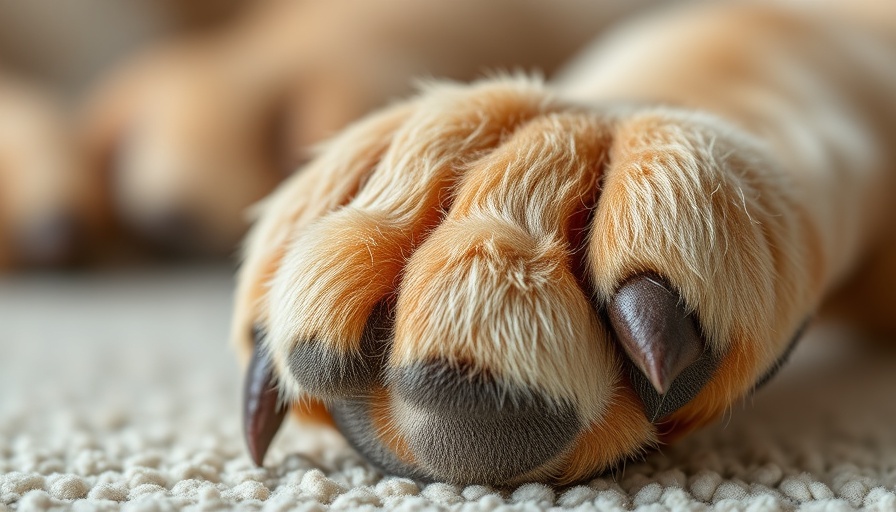
Understanding Yeast Infections in Dogs
Yeast infections in dogs are a common yet often overlooked issue that can cause significant discomfort for our furry friends. The most prevalent culprit is Malassezia pachydermatis, a type of fungus that naturally resides on your dog’s skin. While part of a balanced microbial community, this yeast can become problematic when conditions shift due to factors like poor diet, stress, or antibiotic use. A sudden increase in scratching, licking, or a musty odor from your pet should prompt a closer look at their skin health.
Common Causes Behind Yeast Overgrowth
Identifying what makes your dog susceptible to yeast infections is crucial for preventing reoccurrences. High-starch dog foods, especially kibble, can disrupt the balance of gut bacteria and fuel yeast growth. Here are some common triggers:
- High-Rich Starch Diets: Many dog foods, even grain-free options, are loaded with carbohydrates like peas and potatoes.
- Food Allergies: Dogs may develop sensitivities or intolerances that lead to skin problems, fostering a yeast-friendly environment.
- Overbathing: Using harsh shampoos or bathing too often can strip essential oils from your dog’s skin, leaving it vulnerable.
- Suppressed Immune System: Conditions that weaken a dog’s immunity may result in increased yeast growth.
- Moisture: Areas that are frequently wet, like paw pads and ears, are hotbeds for yeast activity.
Natural Remedies To Soothe and Heal
Once you've determined the potential sources of yeast overgrowth, you can take steps to provide relief using natural remedies. These treatments not only help alleviate symptoms but also restore balance to your dog’s skin.
1. Apple Cider Vinegar (ACV) Rinse
Why It Works: ACV's natural acidity aids in restoring the skin’s pH and has antifungal properties. How To Use: Mix equal parts of raw, unfiltered ACV with filtered water and gently spray onto the affected areas. Do this 1-2 times daily, avoiding any raw or heavily irritated skin because it can sting.
2. Coconut Oil for Moisturizing and Healing
Why It Works: Coconut oil is packed with lauric acid, which is naturally antifungal. Usage: Warm the oil slightly in your hands and massage it into affected areas. Consider infusing it with dried calendula or chamomile for added benefits.
3. Aloe Vera Gel
Why It Works: Aloe Vera is known for its soothing properties and can provide a cooling effect on inflamed skin. How To Use: Apply pure aloe vera gel directly to the skin. Make sure it’s free of additives and chemicals.
4. Oatmeal Baths
Why It Works: Oatmeal works wonders for itchy skin by acting as a natural anti-inflammatory. How To Use: You can buy oatmeal-based dog shampoo or make a homemade concoction by grinding oats into a fine powder and adding it to your dog’s bath water.
5. Probiotics
Why It Works: Probiotics can help re-establish a healthy balance of gut bacteria, which may help in controlling yeast overgrowth. What To Look For: Choose high-quality dog probiotics containing live bacteria.
Preventing Yeast Infections
In addition to treating ongoing yeast infections, keeping an eye on your dog’s diet and hygiene is the best preventive measure. Here are some actionable tips to help your pup stay yeast-free:
- Opt for a balanced diet that limits carbohydrates and sugar.
- Regularly bathe your dog but use gentle, natural shampoos.
- Keep their ears dry and clean.
- Regular vet checkups will also ensure their overall health, particularly if they show symptoms.
Trust Your Instincts
Always consult with your veterinarian if you suspect a yeast infection or if your home remedies fail to work after a short period. Early treatment can prevent more serious complications! Acts of kindness, such as monitoring dietary changes and ensuring a loving, clean environment, can significantly affect your dog’s well-being.
Keep Your Dog Happy and Healthy
Your furry friend deserves to feel their best every day. By understanding the causes and natural remedies for yeast infections, you can make informed care decisions that prioritize their health. Taking a proactive approach will not only help alleviate symptoms but also enrich your bond with your furry family member. If you're passionate about providing the best for your dog, keep looking for ways to enhance their life and health!
 Add Row
Add Row  Add
Add 


Write A Comment